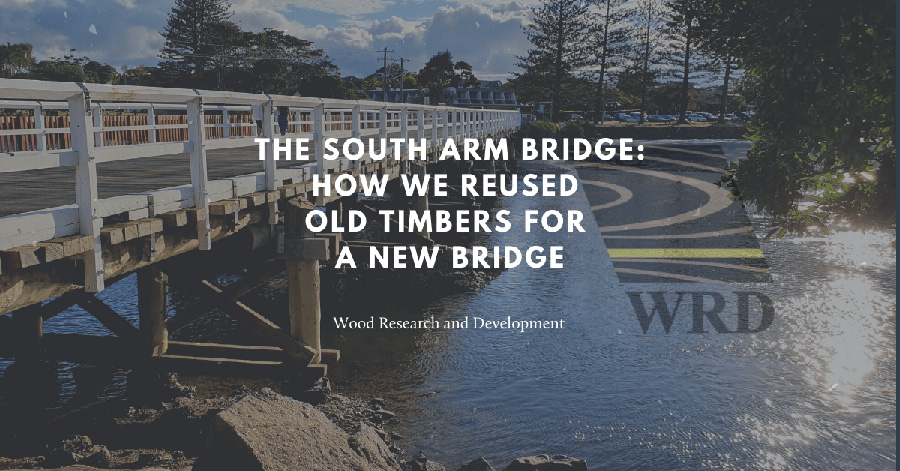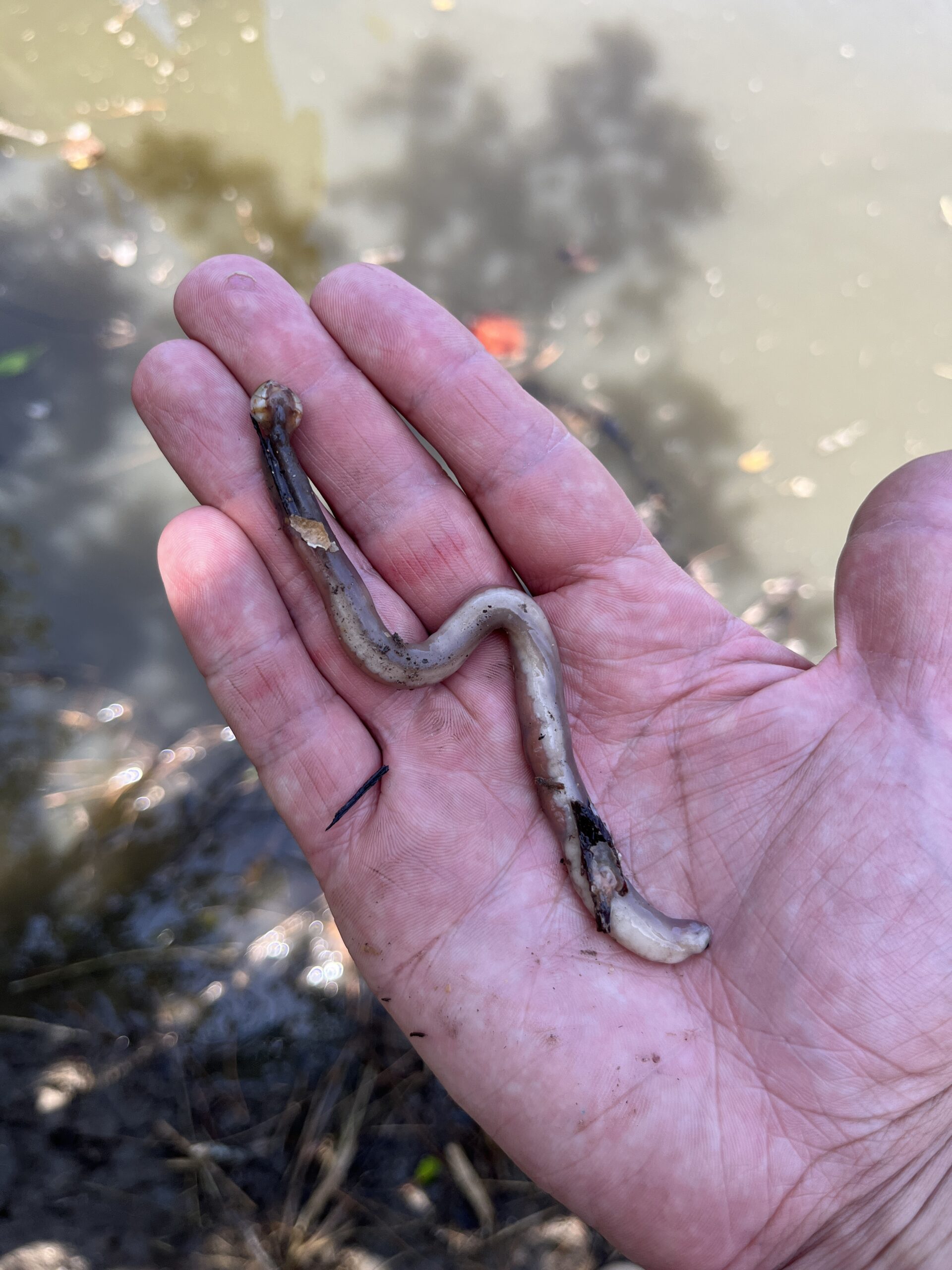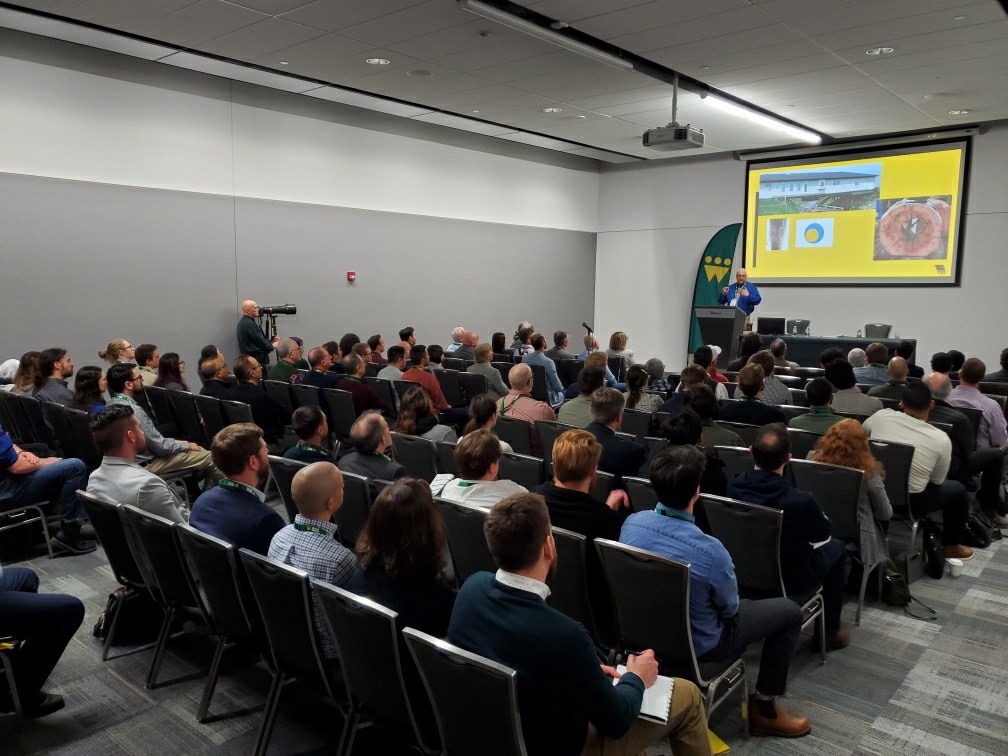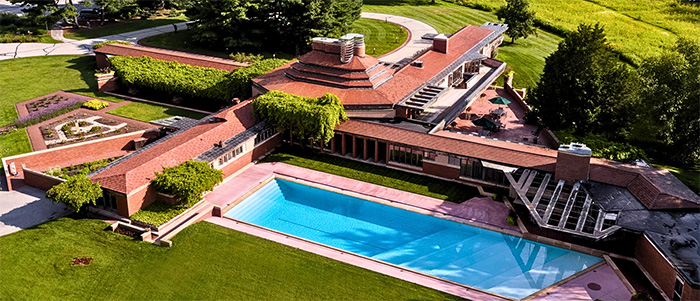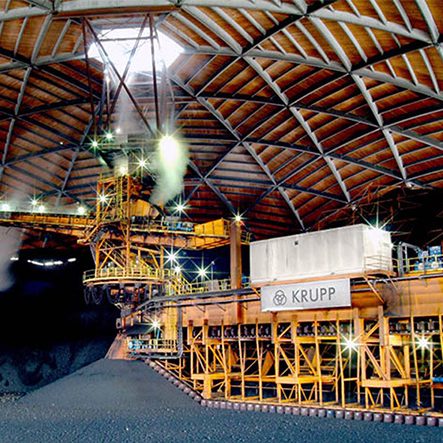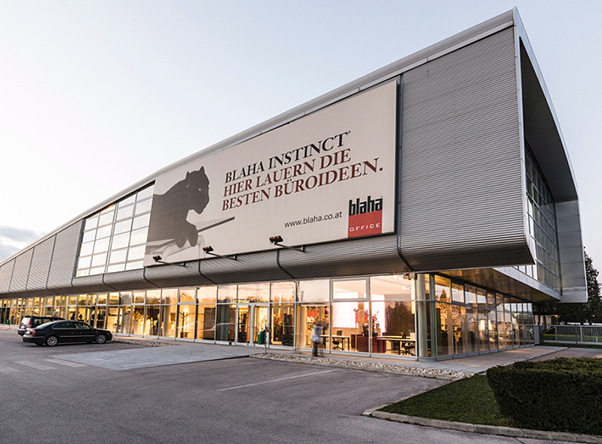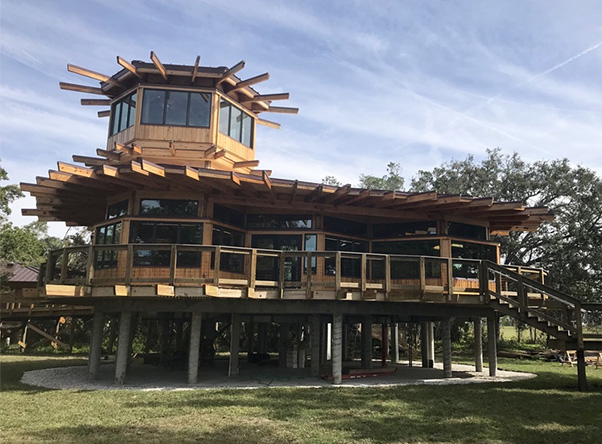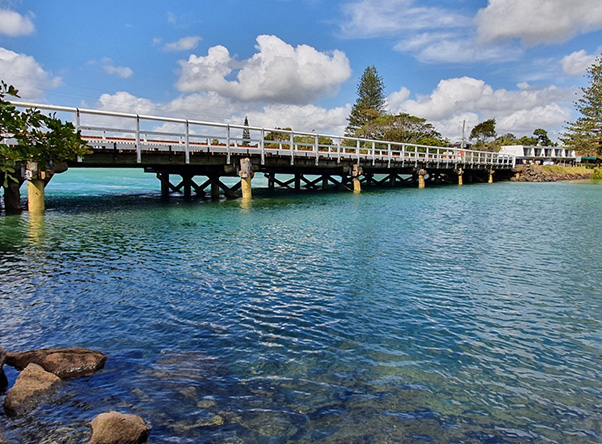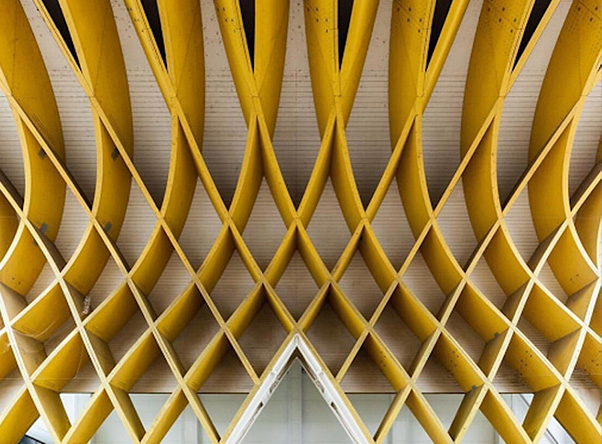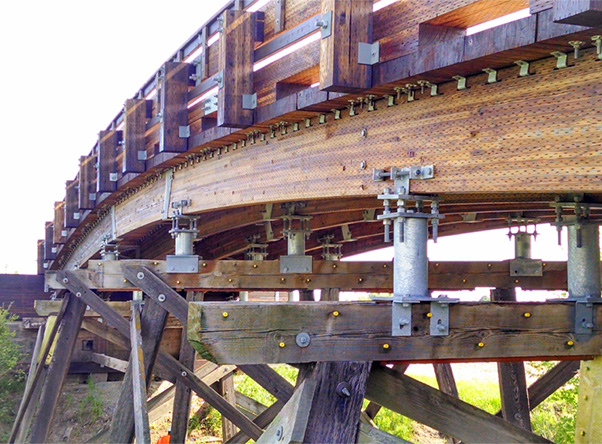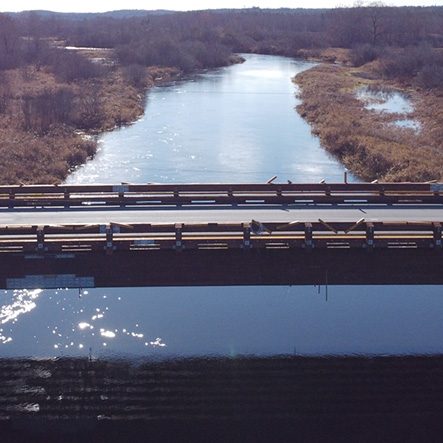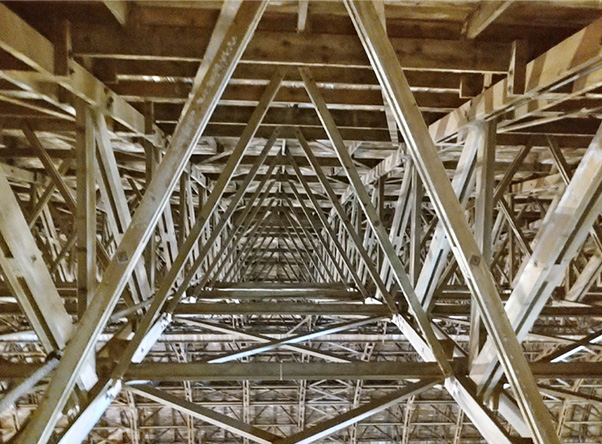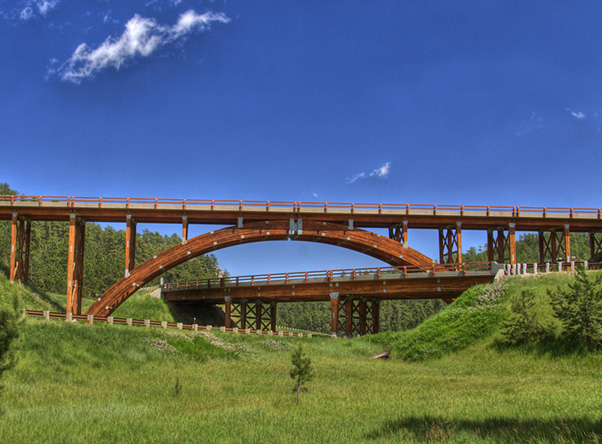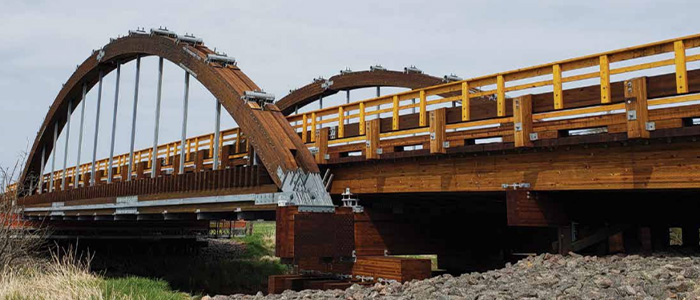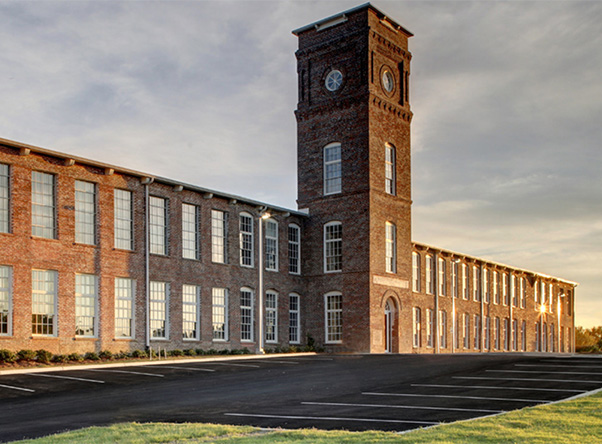South Arm Bridge is a 7-span hardwood timber structure on South Beach Road crossing Simpsons Creek. The structure is in a tidal zone, where the outlet of the creek is on the left-hand side (northern side) of the structure that feeds the Brunswick River.
In 2019, Wood Research and Development (WRD) was engaged by Byron Shire Council (BSC) to carry out a Level 3 bridge load assessment of South Arm Bridge. The overall condition of the 7 span timber bridge was Very Poor (Condition State Rating 4) with the recommendation to reduce the bridge load limit to 10 Tonnes immediately. As a result of this Council required the bridge to be load rated for T44 vehicles – a common load for regional and low volume roads. WRD presented three design options to Council to rehabilitate the bridge with a short-term or long-term design life. The option selected by the client involved the temporarily removal of the deck planks and replacement of the deteriorated piles, corbels and girders with appropriately sized members from council’s current reclaimed timber stockpiles.
In the same year, our partner company Timber Restoration Services (TRS) won the contract to upgrade the 63m bridge from 10 tonne to 44 tonne traffic loading. Part of the rehabilitation process was to recycle the existing timbers where possible and reuse the log timbers at the Council stockyard. To ensure the recycled timber is given the best protection, wherever TRS made cuts or drilled holes, Copper Naphthenate Oil Emulsion (CN oil) was applied and a paraffin-based sealant, Anchorseal® was used to seal the cuts. The final touch was to diffuse all the timbers with borate salt rods, Decaystop® to inhibit fungi growth, allowing easy access to maintain the bridge elements.

Elements Getting sorted and stacked based on condition state
The objective of the investigation was to determine the amount of ‘reusable’ timber at each stockpile by establishing the general condition and size of the reclaimed structural elements. The ‘reusable’ timber will be used for the restoration project of upgrading South Arm Bridge back to T44 loading capacity along with increasing the longevity (useful life) of the timber structure. The reclaimed timber stockpile at Dudgeons Lane was from 5 recently replaced timber bridges around the Bangalow region while the girders at the Byron Council Depot were ‘new’ girders that had not been put into service before. A detailed visual inspection and non-destructive testing was done by WRD engineers. The main technology used to assess the condition of the reclaimed members was through non-destructive testing which utilises the EPHOD® Stress Wave Technology.

All the elements that were tested were also measured including the seat bearing cuts and any defects that were found. Girder 5 above has a minor vertical (6/12) split that extends from End 2 inwards 650mm.

Many of the girders were stacked tightly on top of each other. This doesn’t allow the individual timber elements to ‘dry out’ and thus the high moisture content readings recorded above. When the moisture content is above 22%, decay-causing fungi can start to grow as see above. When the moisture content exceeds this level, conditions are ideal for decay; when the moisture content drops below this level, the fungi become dormant and decay will be arrested until the moisture content rises again. All of the elements that were tested were re-stacked neatly with dunnage and air-gaps between each element to allow the timber to natural breathe and dry out.

Out of the 48 girders tested, 27 are able to be re-purposed as girders based on their condition and overall useful length and size. The remaining girders will be able to be re-proposed as pile posting sections, corbels or shorter girders for future timber bridge rehabilitation works. It was highly recommended that new deck and headstock material is sourced based on the overall poor condition of the decking material at the stockpile along with the slightly incompatible sizes.
Based on the field testing and analysis; all the defective elements (girder, corbels and piles) in South Arm Bridge can be replaced with the reclaimed members that have been recycled by council. Once the South Arm Bridge rehabilitation works are completed, the bridge will have a 50 year design life with minimal to low maintenance as a result of good connection details that prevent the members from degrading from excess moisture content.

The Final Project


